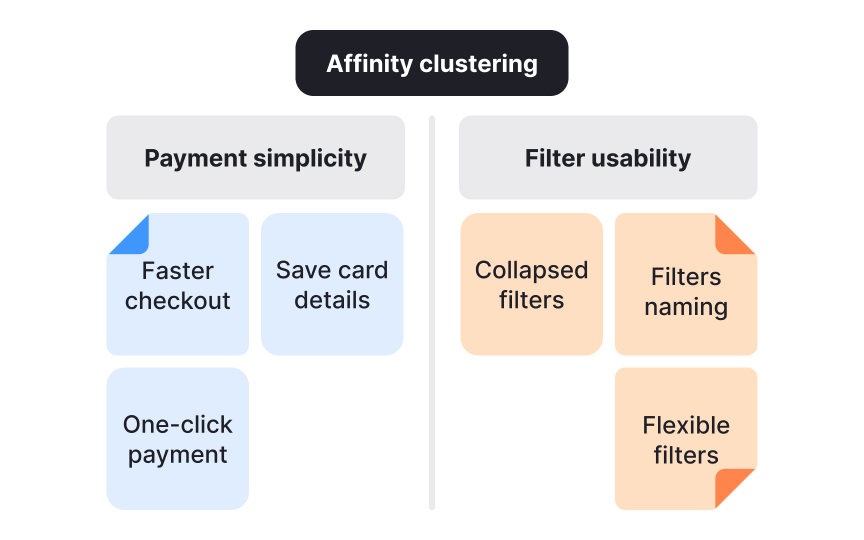Documenting and clustering raw ideas
When ideation sessions generate dozens of suggestions, their value depends on how well those ideas are captured. Writing everything down ensures no contribution is lost, even if it looks impractical at first. Teams often use sticky notes, whiteboards, or digital boards to log each idea in a short, clear phrase. Recording ideas in this way creates a shared memory that prevents dominant voices from deciding which suggestions “deserve” attention.
The next step is clustering. Similar or related ideas are grouped together to reveal emerging themes. For example, in a session about improving an online shop, notes like “faster checkout,” “one-click payment,” and “save card details” might cluster into a theme of payment simplicity. Other clusters could form around personalization or delivery speed. By sorting raw input into groups, patterns become visible, and teams can move from scattered thoughts to structured insights. This method also helps identify gaps, showing where no ideas were proposed, which might point to areas worth further exploration.
Pro Tip: Always cluster before prioritizing. Otherwise, strong individual ideas may overshadow themes that represent deeper opportunities.

